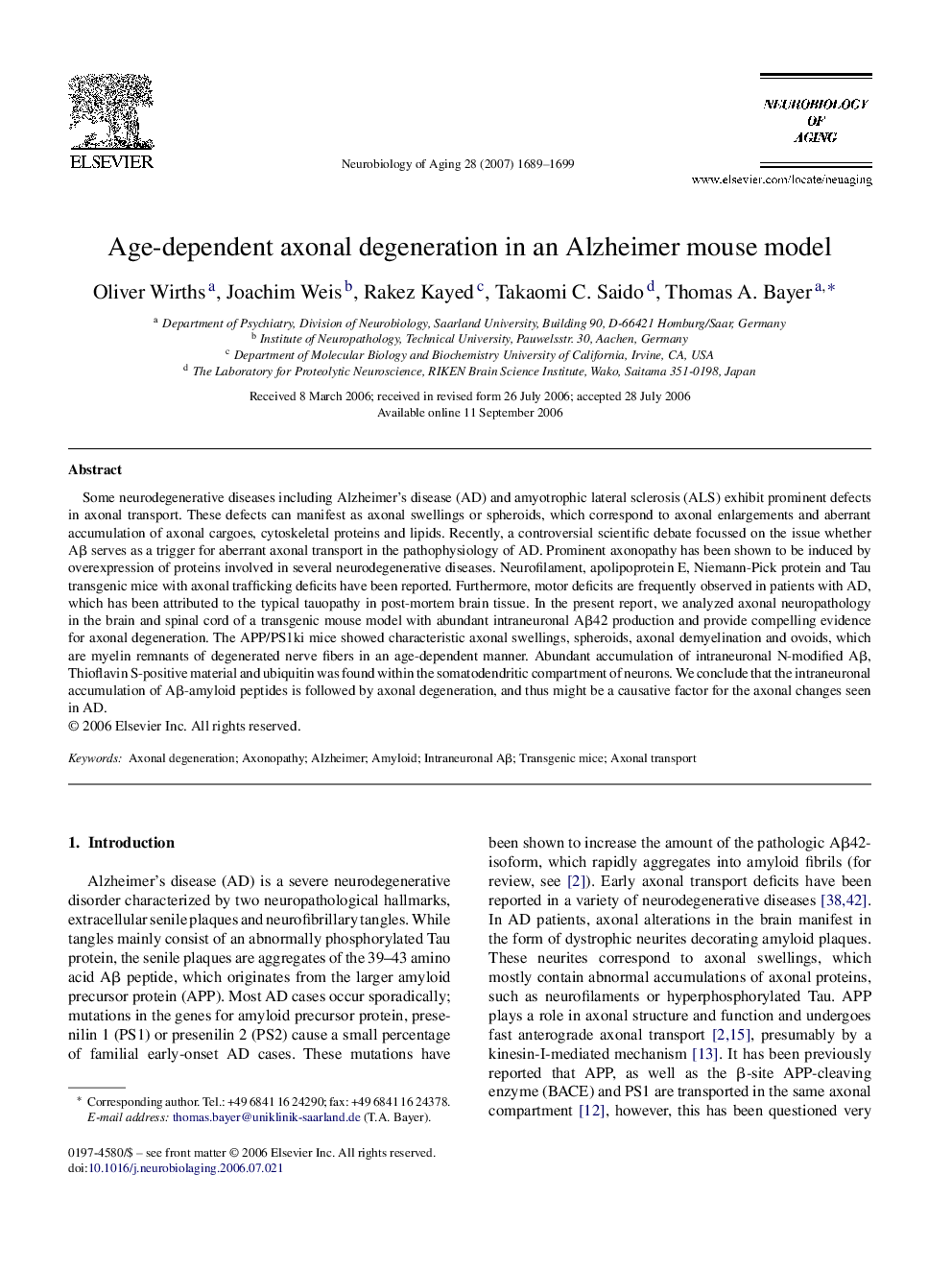| Article ID | Journal | Published Year | Pages | File Type |
|---|---|---|---|---|
| 331361 | Neurobiology of Aging | 2007 | 11 Pages |
Some neurodegenerative diseases including Alzheimer's disease (AD) and amyotrophic lateral sclerosis (ALS) exhibit prominent defects in axonal transport. These defects can manifest as axonal swellings or spheroids, which correspond to axonal enlargements and aberrant accumulation of axonal cargoes, cytoskeletal proteins and lipids. Recently, a controversial scientific debate focussed on the issue whether Aβ serves as a trigger for aberrant axonal transport in the pathophysiology of AD. Prominent axonopathy has been shown to be induced by overexpression of proteins involved in several neurodegenerative diseases. Neurofilament, apolipoprotein E, Niemann-Pick protein and Tau transgenic mice with axonal trafficking deficits have been reported. Furthermore, motor deficits are frequently observed in patients with AD, which has been attributed to the typical tauopathy in post-mortem brain tissue. In the present report, we analyzed axonal neuropathology in the brain and spinal cord of a transgenic mouse model with abundant intraneuronal Aβ42 production and provide compelling evidence for axonal degeneration. The APP/PS1ki mice showed characteristic axonal swellings, spheroids, axonal demyelination and ovoids, which are myelin remnants of degenerated nerve fibers in an age-dependent manner. Abundant accumulation of intraneuronal N-modified Aβ, Thioflavin S-positive material and ubiquitin was found within the somatodendritic compartment of neurons. We conclude that the intraneuronal accumulation of Aβ-amyloid peptides is followed by axonal degeneration, and thus might be a causative factor for the axonal changes seen in AD.
